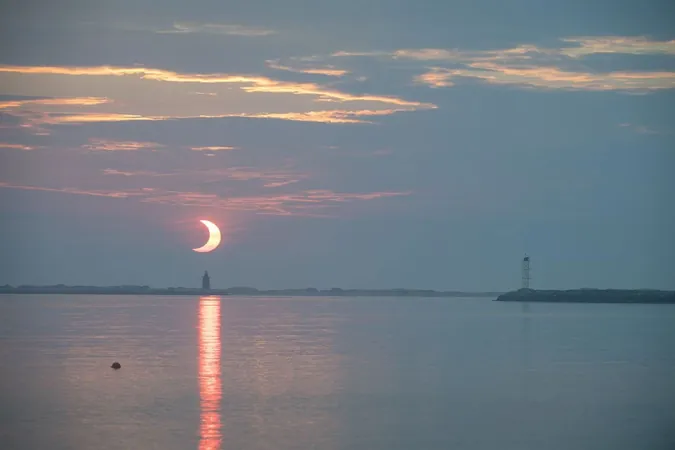
Mark Your Calendars: A Spectacular Partial Solar Eclipse on March 29, 2025!
2025-03-30
Author: Benjamin
Get ready for a celestial treat! On March 29, 2025, sky-gazers around the world will witness a breathtaking partial solar eclipse. This extraordinary event will be visible to everyone located within the shadow of the Moon, promising a stunning view of the Sun partially obscured.
Your Guide to the Eclipse Map
To illustrate where the eclipse can be seen, the accompanying map serves as a crucial tool. The curved yellow lines indicate the percentage of the Sun that will be covered at various locations during the peak of the eclipse. The green lines mark the exact times when the maximum eclipse will occur, providing invaluable information for an optimal viewing experience.
For those in the Eastern Daylight Time zone (EDT), conversion is simple: Times listed in Coordinated Universal Time (UTC) will be 4 hours ahead. So, for example, a maximum eclipse at 10:30 UTC corresponds to 6:30 a.m. EDT.
Adding to the excitement, orange loops illustrate the sunrise and sunset lines, positioning the eclipse beautifully at either end of the day. This means viewers will have unique chances to see the Sun rise or set while partially eclipsed—not something you want to miss!
Eye Safety is No Joke!
As thrilling as it may be, safety is paramount when observing a solar eclipse. It's crucial to never look directly at the Sun without proper eye protection. Regular sunglasses simply do not cut it, regardless of how dark they may seem. Instead, invest in safe solar viewing glasses—often referred to as "eclipse glasses," which meet the ISO 12312-2 international standard for safety.
Never attempt to view the eclipse through a camera lens, telescope, or binoculars, with or without eclipse glasses; the intense solar rays can penetrate the filters and cause severe eye damage. For safe viewing through optical devices, ensure you have a special-purpose solar filter.
If you find yourself without eclipse glasses, fret not! There are indirect methods to enjoy this celestial wonder. One effective technique is the pinhole projector. Simply create a small hole in a card and position it in the sunlight; the image of the Sun will project onto a surface nearby. Just remember: never look directly at the Sun, even with this method!
Don't Miss Out!
This partial solar eclipse is not just another astronomical event; it is a unique opportunity to connect with nature and the cosmos. Ensure you have all the necessary preparations in place for a safe and enjoyable experience.
Mark the date: March 29, 2025; prepare your eclipse glasses, gather your friends, and get ready for an unforgettable view of the skies! Who knows—this might just spark a lifelong passion for astronomy! Remember, events like these don’t happen every day, so don’t let this one pass you by!









 Brasil (PT)
Brasil (PT)
 Canada (EN)
Canada (EN)
 Chile (ES)
Chile (ES)
 Česko (CS)
Česko (CS)
 대한민국 (KO)
대한민국 (KO)
 España (ES)
España (ES)
 France (FR)
France (FR)
 Hong Kong (EN)
Hong Kong (EN)
 Italia (IT)
Italia (IT)
 日本 (JA)
日本 (JA)
 Magyarország (HU)
Magyarország (HU)
 Norge (NO)
Norge (NO)
 Polska (PL)
Polska (PL)
 Schweiz (DE)
Schweiz (DE)
 Singapore (EN)
Singapore (EN)
 Sverige (SV)
Sverige (SV)
 Suomi (FI)
Suomi (FI)
 Türkiye (TR)
Türkiye (TR)
 الإمارات العربية المتحدة (AR)
الإمارات العربية المتحدة (AR)